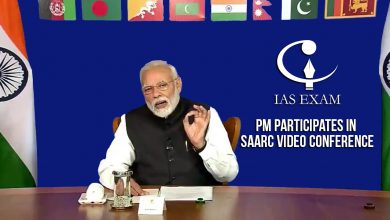Powering the health-care engine with innovation
There is potential for private care providers, innovators and start-ups to be partners in the Ayushman Bharat scheme
It has been close to 18 months since the Prime Minister, Narendra Modi, launched the country-wide implementation of Ayushman Bharat-Pradhan Mantri Jan Arogya Yojana (PM-JAY), or the national health protection scheme; the initial momentum has been very encouraging. The scheme is currently being implemented in 32 of 36 States and Union Territories. It has provided 84 lakh free treatments to poor and vulnerable patients for secondary and tertiary ailments at 22,000 empanelled hospitals, countrywide. Under PM-JAY, there is one free treatment every three seconds and two beneficiaries verified every second.
Inspite of its initial success the implementation of the scheme still leaves a lot of lacunae which needs to be addressed as soon as possible. Some of them include:
Expansion of Supply side
- A key area of focus is to expand the secondary and tertiary hospitals empanelled under PM-JAY and ensure their quality and capacity while keeping the costs down. At present, there is one government bed for every 1,844 patients and one doctor for every 11,082 patients.
- In the coming years, considering 3% hospitalization of PM-JAY-covered beneficiaries, the scheme is likely to provide treatment to 1.5 crore patients annually. This means physical and human infrastructure capacity would need to be augmented vastly.
- Conservative estimates suggest that we would need more than 150,000 additional beds, especially in Tier-2 and -3 cities.
- While a comprehensive long-term strategy will focus on expanding hospital and human resources infrastructure, an effective near-term approach is needed to improve efficiencies and bridge gaps within the existing supply and likely demand.
- A strong, yet under-tapped lever for accelerating health system efficiency and bridging these gaps is mainstreaming innovation in the Indian health system.
Transformative Solutions
- India’s burgeoning entrepreneurial spirit combined with a systematic push for the development of a start-up ecosystem has led to a plethora of innovations in health care.
- It is estimated that there are more than 4,000 health-care technology start-ups in India. Today, start-ups are working to bring innovative technologies and business models that leapfrog infrastructure, human resources, cost-effectiveness and efficiency challenges in Tier-2 and -3 cities.
- Artificial Intelligence platforms that aid in rapid radiology diagnoses in low resource settings, tele-ICU platforms to bridge the gap in high-skilled critical care personnel, centralized drone delivery of blood, medicines and vaccines to reach remote locations cost-effectively and reliably are all no longer just theoretical ideas.
- They are real solutions that are ready to be tested on the ground and potentially implemented. It is high time for transformative solutions to make their way into our hospitals, especially in Tier-2 and -3 cities, to turbocharge the way health care is delivered at scale.
Addressing the Constraints
- One challenge is non-uniform regulatory and validation standards. Regulatory requirements, specifically for biomedical start-ups, are still evolving in India. As a result, hospitals often rely on foreign regulatory certifications such as FDA and CE, especially for riskier devices and instruments.
- In addition, it is difficult for a start-up to understand the minimum necessary validation requirements in order to qualify for procurement by hospitals. Lack of standards in this area leads to a huge variation in validation requirements at States and hospitals, forcing the start-up into a spiral of piloting studies.
- The government is now pushing ahead to overhaul Indian med-tech regulatory standards and product standards which will help bridge this trust-deficit.
- Another problem in promoting start-ups is the operational liquidity crunch due to a long gestation period. Health-care start-ups spend long periods of time in the early development of their product, especially where potential clinical risks are concerned.
- The process of testing the idea and working prototype, receiving certifications, performing clinical and commercial validations, and raising funds, in a low-trust and unstructured environment makes the gestational period unusually long thereby limiting the operational liquidity of the start-up.
- Another hurdle is the lack of incentives and adequate frameworks to grade and adopt innovations. Health-care providers and clinicians, given limited bandwidth, often lack the incentives, operational capacity, and frameworks necessary to consider and adopt innovations. This leads to limited traction for start-ups promoting innovative solutions.
To accelerate this process of mainstreaming innovations within the hospital system in India, we need to focus on:
- Identifying promising market-ready health-care innovations that are ready to be tested and deployed at scale.
- There is a need to facilitate standardised operational validation studies that are required for market adoption, to help ease out the start-up procurement process such that these solutions can be adopted with confidence.
- This, in effect, will serve the entire ecosystem of health-care innovators by opening up health-care markets for all.
- A strong theme in mature health-care systems in other parts of the world is a vibrant and seamless interface between hospitals and health-care start-ups.
Through Ayushman Bharat, India has the unique opportunity to develop a robust ecosystem where hospitals actively engage with health-care start-ups by providing access to testbeds, communicating their needs effectively and adopting promising innovations. Start-ups can be effective collaborators for the most pressing health-care delivery challenges faced by hospitals, as opposed to being mere suppliers of technology or services. The dream of an accessible, affordable and high-quality health-care system for all will be achieved when we work in alignment to complement each other and jointly undertake the mission of creating an Ayushman Bharat.
SOURCE: The Hindu





.png)



